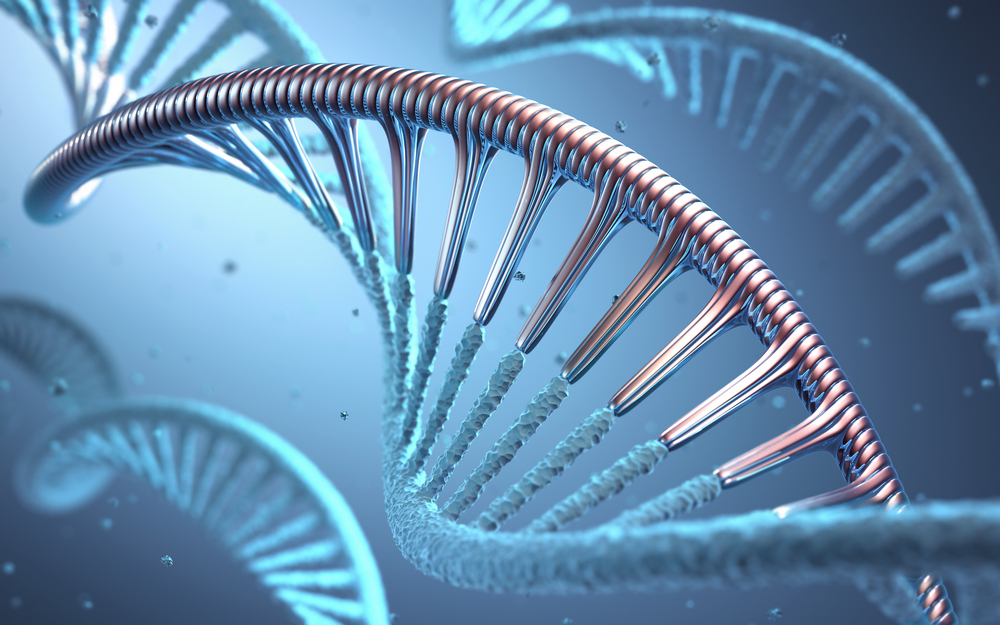Advanced Gene-Editing Technology CRISPR-Gold Repairs DMD Mutation in Mice

A new version of the CRISPR-Cas9 gene-editing technology called CRISPR-Gold has successfully restored the correct sequence of the dystrophin gene in a mouse model of Duchenne muscular dystrophy (DMD), a new study revealed.
Researchers found that an injection of CRISPR-Gold into DMD mice led to an 18-times-higher correction rate and a two-fold increase in a strength and agility test compared to control groups, according to a press release.
The study, “Nanoparticle delivery of Cas9 ribonucleoprotein and donor DNA in vivo induces homology-directed DNA repair,” was published in the journal Nature Biomedical Engineering.
The advent of CRISPR-Cas9 technology has been hailed as a breakthrough for genetic diseases. Prior to CRISPR-Cas9, no technology had the ability to effectively correct a mutation that underlies the pathology of a disease. The CRISPR-Cas9 system, originally discovered as a defense mechanism used by bacteria, was engineered to be able to delete a mutation and insert the correct sequence of a gene.
Unfortunately, methods of delivering the components of this system, which include an RNA molecule called a guide RNA, a protein called the Cas9 nuclease, and the correct DNA sequence to replace the mutation (via donor DNA), have not been fully developed for human use. A primary technique used to deliver the components of this system relies on viruses, but this technique is plagued by complications and unwanted side effects.
In response, researchers at the University of California, Berkeley have developed a new approach called CRISPR-Gold, which used gold nanoparticles to deliver the components of this system in a mouse model of DMD. This method works by using gold nanoparticles to coat a modified DNA molecule that binds the donor DNA, which in turn is bound to Cas9 and the guide RNA.
This entire system is then coated by a polymer that will interact with a cell membrane and allow entry into a cell. Then, the components of the system are released into the cell as the coat breaks apart upon entry. The guide RNA, the Cas9 nuclease, and the donor DNA can then make their way into the nucleus and correct the mutation.
One muscular injection of CRISPR-Gold into the DMD mice was able to restore 5.4% of the dystrophin gene, the defective gene that causes DMD. This is an 18-fold higher rate than when DMD mice were treated with the regular CRISPR-Cas9 system, which had only a 0.3% restoration rate. Additionally, CRISPR-Gold effectively reduced tissue fibrosis and improved the strength and agility of the mice.
The CRISPR-Gold system was able to restore the full normal sequence of dystrophin, while prior CRISPR-Cas9 studies had only been able to remove part of the gene.
Researchers also studied the safety of the CRISPR-Gold system and determined that there was minimal off-target damage, and that administration of CRISPR-Gold did not cause an inflammatory response or weight loss, even with multiple injections.
“CRISPR-Gold and, more broadly, CRISPR-nanoparticles open a new way for safer, accurately controlled delivery of gene-editing tools,” Irina Conboy, PhD, associate professor at Berkeley’s Department of Bioengineering and co-author of the study, said in the press release. “Ultimately, these techniques could be developed into a new medicine for Duchenne muscular dystrophy and a number of other genetic diseases.”
“Genetic diseases cause devastating levels of mortality and morbidity, and new strategies for treating them are greatly needed,” added Niren Murthy, PhD, a professor at the Department of Bioengineering and co-author of the study. “CRISPR-Gold was able to correct disease-causing gene mutations in vivo, via the non-viral delivery of Cas9 protein, guide RNA and donor DNA, and therefore has the potential to develop into a therapeutic for treating genetic diseases.”






